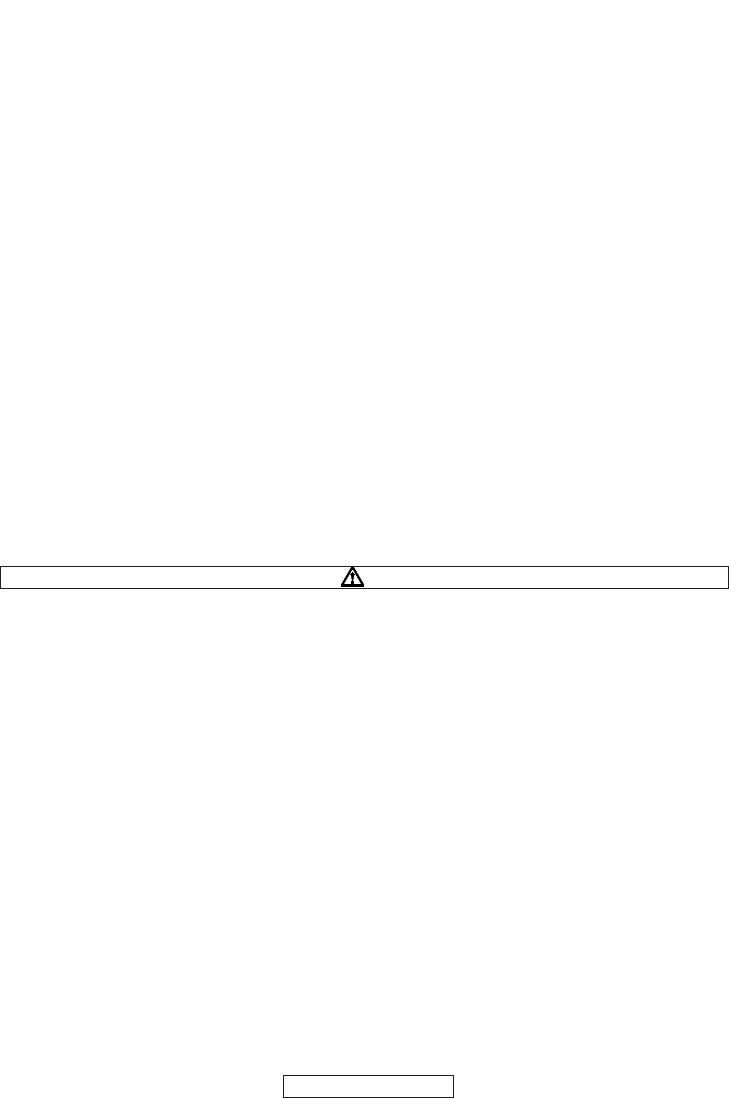
Every 2-3 hours of use
Check the bar condition, if necessary clean
the lubrication holes (fig.5) and the guide
grooves (fig.6) carefully; If the groove is worn
or shows signs of deep notching, it must be
replaced. Clean the sprocket regularly and
check that it has not been subject to excess
wear (fig.7). Lubricate the nose sprocket with
bearing grease through the hole shown in the
illustration (fig.8).
Chain sharpening (When necessary)
If the chain does not cut correctly, or requires
hard bar pressure against the wood, and if the
sawdust is very fine, this is a sign that it is not
sharpened correctly. If the cutting action
produces no sawdust, this means the cutting
edge has been worn completely and the chain
is pulverising the wood during cutting. A well-
sharpened chain crosses through the wood
without effort or pressure and produces large
long wood shavings.
The cutting side of the chain is composed of
the cutting link (fig.9) with a cutting tooth
(fig.10) and a cutting limit gauge (fig.11). The
difference between these determines the
cutting depth; a file guide and a 4mm
diameter round file are needed to obtain good
sharpening results; Follow the instructions
below: Once the chain has been mounted
and the tension is correctly adjusted, and the
chain brake is activated, position the file guide
perpendicular to the bar as shown in the
illustration (fig.12), filing the cutting teeth at
the angle shown (fig.13), always working from
the interior towards the exterior, lessening the
pressure during the return stage (it is very
important to follow the instructions perfectly:
excessive or insufficient sharpening angles or
an incorrect file diameter will increase the risk
of kickback.) To obtain higher precision on
side angles, it is advisable to position the file
so that it exceeds the upper cutter by about
0.5 mm. File all the teeth on one side first,
then turn the machine over and repeat the
operation. Make sure that after sharpening
operations, all teeth are the same length and
that the height of the depth gauge is 0.6 mm
lower than the upper cutter: check the height
using a proper template and file (with a flat
file) all protruding parts, rounding off the front
part of the depth gauge (fig.14), paying
attention to not file the kickback protection
tooth (fig.15)
Every 30 hours use.
Take the machine to the Authorised Service
Centre for general revision and control check
on brake components.
H. CUTTING TECHNIQUES 1,2,3,4,5,6,7,8,9,10,11,12,13,14
(fig.1) When using the machine, prevent:
- cutting in conditions where the trunk could
split during cutting (wood under pressure, dry
dead trees, etc): sudden splitting can be very
dangerous.
- the bar or the chain from becoming blocked
in the cutting notch: if this should occur,
disconnect the machine from the main
electricity supply and try to raise the trunk
using an appropriate tool as a lever; do not
attempt to free the machine by shaking or
pulling as this could cause damage or injury.
- situations that can lead to kickback
reactions.
- using the product above shoulder height
- cutting wood with foreign objects e.g. nails
(fig.1) During machine use:
- When cutting on sloping ground, always work
uphill of the trunk to avoid being hit if the trunk
should roll downhill.
- When felling trees, always finish the job: a
partially cut tree could break and fall.
- At the end of each cutting operation the user
will notice a considerable change in the strength
necessary for controlling the machine. Great
care must be taken not to loose control.
Below is a description of two different types of
cutting operation:
Cutting action by pulling the chain (from top to
bottom) (fig.2) can lead to dangerous sudden
movement of the machine towards the trunk
with consequential loss of control. Where
possible, use the spiked bumper during
cutting operations.
Cutting action pushing the chain (from bottom
to top) (fig.3) will lead to the danger of a
sudden movement of the machine in the
direction of the user, with the risk of hitting the
user, or an impact of the “kickback danger
zone” on the trunk resulting in strong
kickback; extreme care must be taken when
cutting in this manner.
The safest method for using the machine, is
to block the log on a sawhorse, cutting from
top to bottom, on the portion outside the
sawhorse. (fig.4)
Spiked bumper use.
Where possible, use the spiked bumper to
ensure safer cutting action: plant it in the bark
or surface of the trunk in order to maintain
more control over the machine.
ENGLISH - 8


















